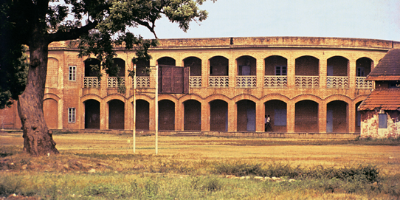17 Dez 1694 Jahr - Universities in Ancient and Medieveal India
Beschreibung:
(excerpt from University Education Commission 1949)1. Universities in Ancient India-The universities of modern India owe very little to our ancient or mediaeval centres of learning but one must not forget the existence of such centres since very early times. The parishads or assemblies of Brahmans learned in the Vedas and Dharma Sutras probably attracted a number of students desirous of acquiring knowledge like Svetaketu in the Chandogya Upanishad. Later there grew up well organised centres of learning of which the most famous were Taksasila and Nalanda. One of the Jatakas relates the story of the sixteen year-old son of the King of Banaras who went to distant Taksasila, with a thousand pieces of gold, the fee for his teacher who was to take him through the various branches of learning. The curriculum at Taksasila appears,to have included the Vedas and the Vedangas as also the eighteen arts which comprised of medicine and surgery, astronomy and astrology, agriculture and accountancy, archery and snake charming. Students at Nalanda often spent as many as twelve years studying the Vedas and the Upanishads, the works of Mahayana Buddhism and Jainism, the systems of philosophy and logic. Nalanda was a Buddhist centre but, the atmosphere and work of the institution appear to have been very similar to those of the Hindu centres, with a, close relationship of the teacher and pupil, with individual instruction diversified by public discussions. Taksasila probably flourished as an educational centre till the fifth century A.D. while Nalanda was destroyed towards the close of the twelfth century. Vallabhi in Kathiawad and Kanchi in the south were great centres of learning about the same time as Nalanda. Of Vikramasila and Odantapuri in Bihar we know much less, but Nadia in Bengal continues its traditions down to the present day. Here the students specialised in logic, but law and grammar were also studied.
Mediaeval Universities-While some of those Hindu centres of learning in the East and the South continued their work throughout the middle ages, the Mohamedan rulers encouraged the establishment of colleges (madrasahs) at places like Lahore, Delhi, Rampur, Lucknow, Allahabad, Jaunpur, Ajmer and Bidar. Sher Shah who later became emperor was a student at Jaunapur, and among, the subjects he studied there were history and philosophy, Arabic and Persian literature. The curriculum of these colleges paralleled the trivium and quadrivium of the European institutions and included grammar, rhetoric, logic and law, geometry and astronomy, natural philosophy, metaphysics and theology while poetry was a source of pleasure to all. Most of the important institutions attempted to specialize in one or more branches of knowledge as Rampur did in logic and medicine, Lucknow in theology and Lahore in astronomy and mathematics. The medium of instruction was mainly Arabic and there were many famous scholars in Arabic, teaching in the institutions of higher learning. While most of these institutions have disappeared, some still carry on the traditions of the old Madrasahs.
Zugefügt zum Band der Zeit:
Datum:
17 Dez 1694 Jahr
Jetzt
~ 331 years ago
